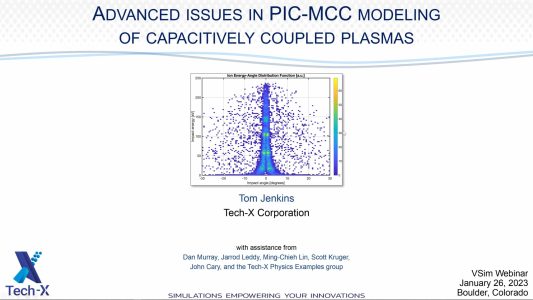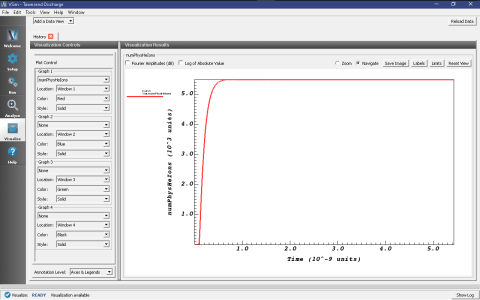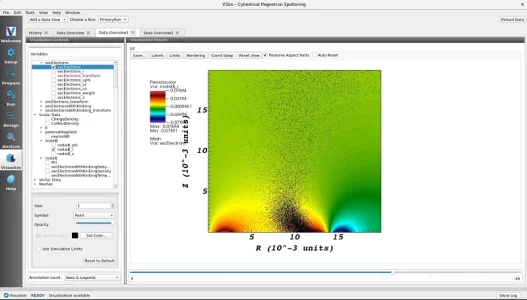VSim 12.0
Built on the powerful Vorpal physics engine that researchers and engineers have used for over 20 years, VSim 12 offers new reaction capabilities, user examples, and numerous improvements designed to increase user efficiency.

Learn how to boost efficiency and simplify your workflow with the new features in VSim 12.0
Built on the powerful Vorpal physics engine that researchers and engineers have used for over 20 years, VSim 12 offers new reaction capabilities, user examples, and numerous improvements designed to increase user efficiency.


Because of the many numerical and modeling choices, modeling capacitively coupled plasmas using a Particle-In-Cell/Monte-Carlo-Collisions (PIC-MCC) approach has challenges. To cultivate confidence in these simulations, Turner Et.al. ["Simulation benchmarks for low-pressure plasmas," Phys. Plasmas, 20, . 1-11, 2013] created a rigorous benchmark for verifying PIC-MCC codes. We will discuss VSim's modeling of this benchmark, the limitations of the benchmark, and the implications for the users of our software.

Quickly compute a Townsend coefficient.

Optimal setup conditions for magnetron sputtering.
An Introductory Overview of VSim with the Hall Thruster Example
Dr. Daniel Murray
Using VSim to Optimize your Magnetron Sputtering Setup
Dr. Daniel Main
Modeling Ohmic Surface Losses in VSim
Dr. David Smithe
| Cookie | Duration | Description |
|---|---|---|
| cookielawinfo-checkbox-analytics | 11 months | This cookie is set by GDPR Cookie Consent plugin. The cookie is used to store the user consent for the cookies in the category "Analytics". |
| cookielawinfo-checkbox-functional | 11 months | The cookie is set by GDPR cookie consent to record the user consent for the cookies in the category "Functional". |
| cookielawinfo-checkbox-necessary | 11 months | This cookie is set by GDPR Cookie Consent plugin. The cookies is used to store the user consent for the cookies in the category "Necessary". |
| cookielawinfo-checkbox-others | 11 months | This cookie is set by GDPR Cookie Consent plugin. The cookie is used to store the user consent for the cookies in the category "Other. |
| cookielawinfo-checkbox-performance | 11 months | This cookie is set by GDPR Cookie Consent plugin. The cookie is used to store the user consent for the cookies in the category "Performance". |
| viewed_cookie_policy | 11 months | The cookie is set by the GDPR Cookie Consent plugin and is used to store whether or not user has consented to the use of cookies. It does not store any personal data. |